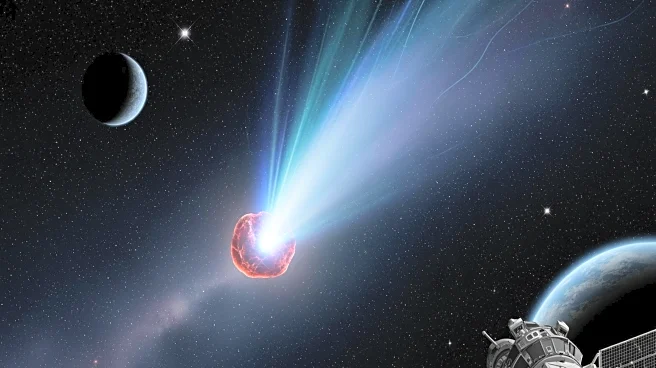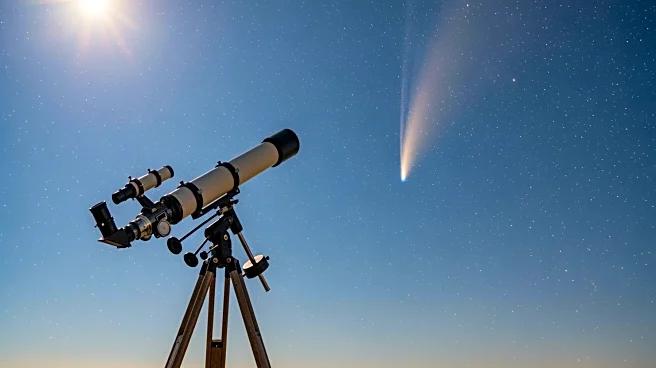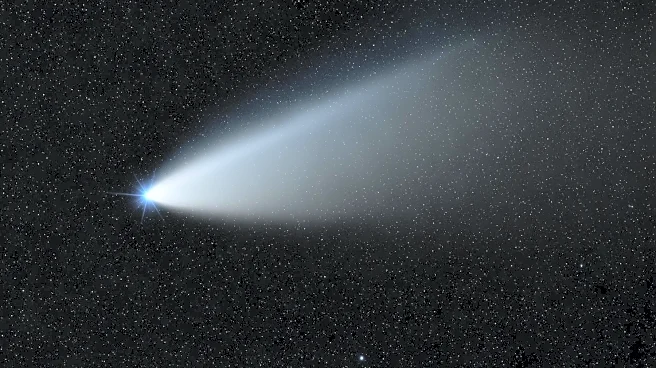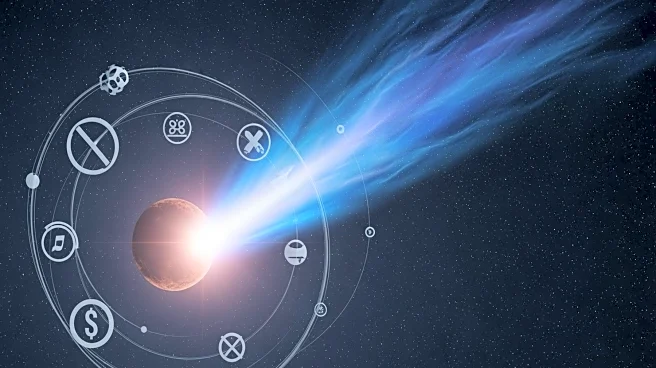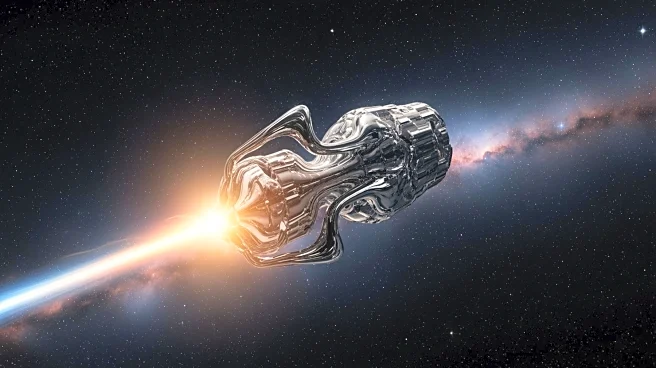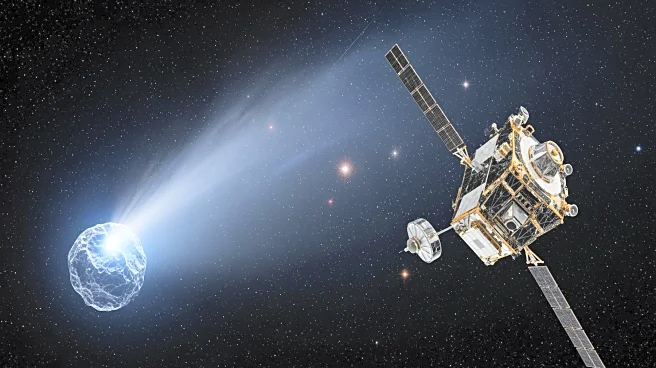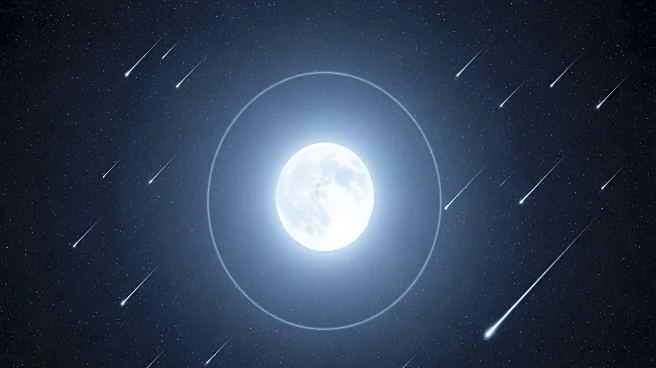What's Happening?
The MeerKAT Radio Telescope in South Africa has successfully detected radio absorption lines from hydroxyl radicals, specifically OH molecules, emanating from the interstellar object 3I/ATLAS. This marks
the first radio detection of 3I/ATLAS, as reported by D.J. Pisano and collaborators. The observation occurred on October 24, 2025, when 3I/ATLAS was positioned at an angular separation of 3.76 degrees from the Sun. The detected OH absorption signal was identified in two spectral lines at radio frequencies of 1.665 and 1.667 gigahertz, with Doppler velocity shifts of -15.59 and -15.65 kilometers per second, respectively. This discovery follows previous unsuccessful attempts to detect these lines in September 2025. The solar conjunction of 3I/ATLAS relative to Earth occurred on October 21, 2025, contributing to the conditions favorable for this detection.
Why It's Important?
The detection of radio signals from 3I/ATLAS is significant as it provides new insights into the composition and behavior of interstellar objects. This discovery could enhance our understanding of the physical processes occurring in such objects, potentially offering clues about the presence of similar molecules in other interstellar bodies. The findings may also stimulate further research into the origins and characteristics of interstellar objects, which could have implications for our understanding of the universe. The successful detection by MeerKAT underscores the importance of radio telescopes in advancing astronomical research and could lead to increased interest and investment in radio astronomy.
What's Next?
On March 16, 2026, 3I/ATLAS is expected to pass within 53 million kilometers of Jupiter. During this time, the Juno spacecraft will utilize its dipole antenna to search for additional radio signals from 3I/ATLAS at low frequencies ranging from 50 hertz to 40 megahertz. This upcoming observation could provide further data on the interstellar object, potentially revealing more about its composition and behavior. The scientific community is likely to continue monitoring 3I/ATLAS, with radio observatories like MeerKAT playing a crucial role in ongoing research efforts.
Beyond the Headlines
The detection of hydroxyl radicals from 3I/ATLAS raises questions about the potential for similar molecules to exist in other interstellar objects, which could have implications for the search for extraterrestrial life. The presence of such molecules might suggest chemical processes that are conducive to life, or at least to the formation of complex organic compounds. This discovery could also influence the way scientists approach the study of interstellar objects, encouraging a focus on radio signals as a means of gathering data on their composition and behavior.


